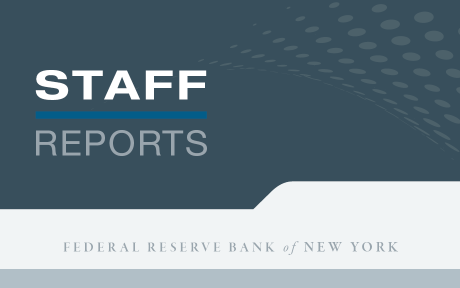
Numerous studies of the Paycheck Protection Program (PPP), which provided loans to small businesses during the COVID-19 pandemic, have documented racial disparities in the program. Because publicly available PPP data only include information on approved loans, prior work has largely been unable to assess whether these disparities were driven by borrower application behavior or by lender approval decisions. In this post, which is based on a related Staff Report and NBER working paper, we use the Federal Reserve’s 2020 Small Business Credit Survey to examine PPP application behavior and approval decisions and to study the strengths and limitations of fintech lenders in enhancing access to credit for Black-owned businesses.
An Overview of the Paycheck Protection Program
Initially authorized in March 2020 by the CARES Act, the PPP offered qualifying small businesses nonrecourse loans with standardized terms and the possibility of full or partial forgiveness. Loans were originated and underwritten by a variety of financial intermediaries, including depository institutions, fintechs, and community development financial institutions (CDFIs). The PPP imposed few eligibility requirements, as one of the program’s goals was to include the vast majority of small businesses. There were, however, documentation requirements that proved challenging for many businesses. Ultimately, the PPP provided $800 billion in loans.
Why Were Black-Owned Firms Less Likely to Receive PPP?
To demonstrate the accuracy and validity of our survey data, we first replicate the finding in prior work that Black-owned firms were less likely than white-owned firms to obtain PPP funds. In the raw survey data, we find that Black-owned firms were 25.7 percentage points less likely than white-owned firms to receive PPP loans. After using a linear regression model to control for a rich set of firm, owner, and location characteristics, we estimate that Black-owned firms were 8.9 percentage points less likely to receive PPP loans, as shown in the first blue bar in the chart below. (That is, about 17 percentage points of the difference is explained by these characteristics.) Hispanic-owned firms were also substantially less likely to obtain PPP funds than observably similar white-owned firms, a disparity we estimate to be 6.1 percentage points.
Racial Disparities in the Paycheck Protection Program
Percentage points
Notes: For each group, the take-up (application) disparity is calculated as the difference between the group’s take-up rate (application rate) and the take-up rate (application rate) of white-owned firms, controlling for firm, owner, and location characteristics. For each group, the approval disparity is calculated as the difference between the application and take-up disparities.
How much of the 8.9 percentage point disparity in take-up rates between Black- and white-owned firms is driven by a disparity in the propensity to apply for PPP loans? After controlling for observable characteristics, we find that Black-owned firms were 4.9 percentage points less likely to apply for a PPP loan (first gold bar in the above chart). The application disparity can therefore explain about 55 percent (4.9/8.9) of the take-up disparity between observably similar Black- and white-owned firms, while the disparity in approval rates explains the rest.
In the paper, we show that the lower propensity of Black-owned firms to apply for PPP loans is best explained by the administrative burdens of the program, which involved a complex set of documentation requirements and loan amount calculations that were problematic for many small business owners. It is likely that Black-owned firms experienced more difficulties with these administrative burdens; data from the 2021 Small Business Credit Survey show that Black-owned firms are significantly less likely than white-owned firms to seek business advice from professionals such as lawyers, accountants, and consultants, even after controlling for detailed firm, owner, and location characteristics. Moreover, we find that Black-owned firms were more likely than observably similar white-owned firms to say they did not apply because the process was too confusing (5.8 percentage point differential), they were unaware of the program (4.7 percentage point differential), or they missed the program deadline (7.4 percentage point differential).
Why Were Black-Owned Firms Less Likely to Use Banks?
Several previous papers have found that Black-owned PPP recipients were less likely than white-owned recipients to have obtained their loans from banks and more likely to have obtained them from fintech lenders. One paper has argued that Black-owned firms were less likely to get loans from banks because they face larger disparities in approval rates at banks than at fintechs. If true, this would suggest that the automated loan processing used by fintechs helps reduce the scope for racially biased lending decisions.
Strikingly, our results show that application behavior, not differences in approval disparities, entirely explains why Black-owned PPP borrowers tend to have received their loans from fintechs and not from banks, as shown in the chart below. Black-owned firms were 9.9 percentage points less likely than observably similar white-owned firms to apply to banks (first blue bar) and 7.8 percentage points more likely to apply to fintechs (first gold bar), but racial disparities in approval rates were very similar at banks (7.4 percentage points, second blue bar) and fintechs (8.4 percentage points, second gold bar).
Disparities in Bank Usage
Percentage points
Notes: For each lender type, the application disparity is calculated as the difference between the rates at which Black- and white-owned PPP applicants applied to that type of lender, controlling for firm, owner, and location characteristics. For each lender type, the approval disparity is calculated as the difference between the rates at which Black- and white-owned firms that applied to that lender type were approved by that lender type, controlling for firm, owner, and location characteristics.
Why were Black-owned firms less likely than white-owned firms to apply to banks? As shown below, we find that Black-owned firms were particularly unlikely to apply to banks located in counties in which survey responses of white residents exhibit stronger indications of explicit or implicit bias toward Black people. Numerous studies have correlated these measures of racial bias, from Harvard University’s Project Implicit, with racial disparities in a variety of contexts. Our findings suggest either that a legacy of racial discrimination by banks discouraged Black-owned businesses from approaching banks for PPP funding, or that when they approached banks, they were discouraged from applying due to the racial animus of loan officers. In contrast, due to the automated nature of fintech lending, it is unlikely that racial animus would have limited applications by Black-owned firms to fintech lenders. It is instead likely, given our evidence that Black-owned firms experienced greater administrative burdens in the application process, that Black-owned firms preferred the more streamlined application process at fintechs.
Disparities in Bank Usage Are Larger in Biased Counties
Percentage points
Notes: For each level of implicit racial bias (low, average, high), the application disparity is calculated as the difference between the rates at which Black- and white-owned PPP applicants in a county with that level of racial bias applied to banks, controlling for firm, owner, and location characteristics. For each level of implicit racial bias, the approval disparity is calculated as the difference between the rates at which Black- and white-owned bank applicants in a county with that level of implicit bias were approved by banks, controlling for firm, owner, and location characteristics.
The similarity of bank and fintech approval disparities, displayed on the right side of the chart above entitled “Disparities in Bank Usage,” is harder to explain at first glance. Precisely due to the automated nature of fintech lending, one would predict lower approval disparities at fintechs than at banks. While the right side of the above chart indicates that racial bias was related to approval disparities at banks, our analysis suggests that that there were other determinants of approval disparities at banks and fintechs, which we now discuss.
Understanding Approval Disparities at Banks and Fintechs
Just as the administrative burdens inherent in the PPP application process seem to have led to lower application rates by Black-owned firms, they may also have led to racial disparities in approval rates. Although the overwhelming majority of loan applications from Black- and white-owned firms were approved, there are numerous accounts of difficulties faced by small firms. These difficulties include documenting eligibility for the program, determining the loan amounts that could be requested under program rules, and substantiating requested loan amounts with required documentation (see this report, for example). Considerable anecdotal evidence, including from congressional testimony, also suggests that Black-owned firms faced greater challenges meeting documentation requirements and determining the loan amounts they could request under program rules. This interpretation is consistent with evidence cited above indicating that Black-owned firms are significantly less likely than white-owned firms to have access to advice from paid professionals. Furthermore, we show in our paper that Black-owned PPP recipients were much less likely than white-owned recipients to receive the full amount of funds they requested, indicating that they either requested more than they were eligible for or provided documentation that did not fully substantiate the requested amount.
Final Thoughts
The finding that PPP approval disparities were similar in magnitude at banks and fintechs raises important questions about the relationship between automation and racial disparities in access to credit more generally. In particular, while fintech automation may make it easier for firms to apply for loans, firms that need guidance through the application process may be disadvantaged because of the limited hands-on help fintechs provide. Because Black-owned businesses are less likely to have access to professional services providers to help with their applications, they may be particularly disadvantaged by the automated fintech application process. By contrast, the more hands-on approach taken by banks may better position them to help applicants resolve documentation gaps. But our evidence on racial bias suggests that such human involvement comes with a potentially significant cost: it may enable past or ongoing racial bias to discourage Black-owned businesses from applying for credit, and it may reduce the likelihood that their applications are approved.
Sergey Chernenko is an associate professor of management at Purdue University’s Krannert School of Management.

Nathan Kaplan is a research analyst in the Federal Reserve Bank of New York’s Research and Statistics Group.

Asani Sarkar is a financial research advisor in Non-Bank Financial Institution Studies in the Federal Reserve Bank of New York’s Research and Statistics Group.
David S. Scharfstein is the Edmund Cogswell Converse Professor of Finance and Banking at Harvard Business School. Until April 2022, Scharfstein was on the board of M&T Bank Corporation, which participated in the Paycheck Protection Program.
How to cite this post:
Sergey Chernenko, Nathan Kaplan, Asani Sarkar, and David S. Scharfstein, “What Drove Racial Disparities in the Paycheck Protection Program?,” Federal Reserve Bank of New York Liberty Street Economics, June 1, 2023, https://libertystreeteconomics.newyorkfed.org/2023/06/what-drove-racial-disparities-in-the-paycheck-protection-program/
BibTeX: View |
Disclaimer
The views expressed in this post are those of the author(s) and do not necessarily reflect the position of the Federal Reserve Bank of New York or the Federal Reserve System. Any errors or omissions are the responsibility of the author(s).












 RSS Feed
RSS Feed Follow Liberty Street Economics
Follow Liberty Street Economics
We would like to make two points in response to your comments. First, in the Staff Report (https://www.newyorkfed.org/research/staff_reports/sr1060.html) on which this blog post is based, we explain in detail the eligibility and documentation requirements of the PPP application process. While the actual application form was short, as you note, it could be far more onerous to prepare the additional documents often needed to substantiate eligibility and loan requests, which were not limited to only tax returns. Among other things, these documents could include third-party verification of contributions to benefits programs, articles of organization or incorporation, and profit-and-loss statements. Our paper presents both anecdotal and statistical evidence that many small firms, not just Black-owned firms, faced difficulties in navigating the PPP application process. Moreover, in both our staff report and in this blog post, we argue that the disparate impact of administrative burdens on Black-owned firms is likely driven by disparities in access to professional services; we do not claim that Black- or other minority-owned businesses were less capable of navigating the complexities of the PPP application process.
Second, as you note, firms without paid employees and with no taxable income in 2019 were not eligible to receive PPP loans in 2020. We directly control for this in our statistical analysis, and our results are thus not driven by rejections of this nature.
I’m afraid I have to disagree with the findings presented. My thesis is that many of the people mentioned in this study didn’t get approved for a loan because their income tax returns were either absent or showed that they didn’t have operating income, i.e., posted losses for prior years. Your study fails to mention the requirements for the loans. Additionally, you infer almost explicitly that Blacks and other minorities could not complete the application process due to its complexity. The application was not very difficult and could be completed by an 8th grader, and your suggestion is therefore insulting at the very least